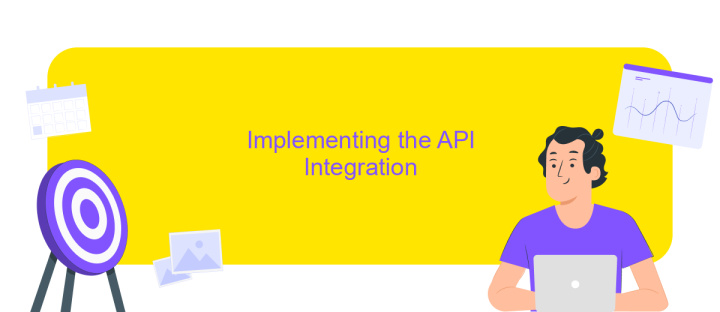REST API Integration
REST API integration is a crucial aspect of modern software development, enabling seamless communication between different systems and applications. By adhering to REST principles, developers can create scalable and efficient interfaces that facilitate data exchange over the web. This article explores the fundamentals of REST API integration, highlighting its benefits, best practices, and common challenges faced during implementation, to help you harness its full potential in your projects.
Understanding REST API Fundamentals
REST (Representational State Transfer) API is a set of rules and conventions for building and interacting with web services. It leverages the HTTP protocol to enable communication between a client and a server, allowing for data exchange in a stateless manner. RESTful services are designed to be simple, scalable, and flexible, making them an ideal choice for modern web applications.
- Stateless: Each request from a client to a server must contain all the information needed to understand and process the request.
- Client-Server Architecture: Separation of concerns is achieved by separating the user interface concerns from the data storage concerns.
- Cacheable: Responses must define themselves as cacheable or not to prevent clients from reusing stale data.
- Layered System: The architecture is composed of hierarchical layers, allowing for scalability and flexibility.
- Uniform Interface: Simplifies and decouples the architecture, allowing each part to evolve independently.
Understanding these fundamentals is crucial for developers aiming to create efficient and robust REST APIs. By adhering to these principles, developers can ensure their APIs are reliable, easy to maintain, and capable of meeting the demands of diverse client applications. REST's simplicity and scalability make it a cornerstone of modern web development.
Designing and Planning Your Integration

When designing and planning your REST API integration, it is crucial to begin with a clear understanding of the requirements and objectives. Identify the specific functionalities you need to achieve and outline the data flow between systems. This involves mapping out the endpoints you will interact with and determining the necessary HTTP methods. Consider the authentication methods that will be employed to ensure secure data exchange. Additionally, take into account any rate limits or constraints imposed by the API provider to avoid disruptions in your integration.
Once you have a solid plan, choose the right tools and platforms to facilitate the integration process. ApiX-Drive, for instance, offers a user-friendly interface that simplifies connecting different applications without extensive coding. It allows you to automate data transfers and monitor the integration's performance, ensuring seamless operations. By leveraging such services, you can reduce development time and focus on optimizing the integration to meet your business needs. Thorough testing and validation should follow to ensure that the integration functions as expected and delivers the desired outcomes.
Implementing the API Integration

Integrating a REST API into your application can significantly enhance its functionality by allowing seamless communication with external services. The process involves a few critical steps to ensure a smooth and efficient integration. First, it's essential to thoroughly understand the API documentation provided by the API provider. This documentation outlines the available endpoints, request methods, and data formats required for successful interaction.
- Begin by setting up the necessary authentication mechanisms. This often involves obtaining API keys or tokens to authorize your requests.
- Next, construct HTTP requests to interact with the API. Use tools like Postman to test these requests and ensure they return the expected responses.
- Implement error handling to manage potential issues such as network errors or invalid responses. This step is crucial for maintaining the stability of your application.
- Finally, integrate the API endpoints into your application's codebase, ensuring that the data retrieved is correctly processed and utilized within your app.
By following these steps, you can effectively integrate a REST API into your application, enhancing its capabilities and providing users with enriched features. Continuous testing and monitoring are vital to maintaining the integration's reliability and performance over time.
Testing and Debugging

Testing and debugging are crucial steps in ensuring the reliability and performance of a REST API integration. Thorough testing helps identify potential issues early, allowing developers to address them before they affect end-users. It's essential to test various aspects of the API, including functionality, performance, security, and compatibility, to ensure a seamless integration.
Debugging, on the other hand, involves identifying and resolving errors or bugs that arise during the integration process. Effective debugging requires a systematic approach, utilizing tools and techniques that can pinpoint the source of issues quickly. This often involves analyzing error logs, reviewing code, and using debugging tools to trace the flow of data and identify discrepancies.
- Use automated testing tools to simulate API requests and responses.
- Validate API responses against expected outcomes to ensure accuracy.
- Monitor API performance under various conditions to identify bottlenecks.
- Employ logging mechanisms to capture detailed error information.
By incorporating comprehensive testing and debugging practices, developers can enhance the stability and efficiency of REST API integrations. This proactive approach not only improves the user experience but also minimizes downtime and maintenance efforts, leading to a more robust and reliable system overall.
- Automate the work of an online store or landing
- Empower through integration
- Don't spend money on programmers and integrators
- Save time by automating routine tasks
Deployment and Maintenance
Deploying a REST API involves several key steps to ensure a smooth integration process. Initially, it is crucial to thoroughly test the API in a staging environment to identify and resolve any potential issues before going live. Employing automated testing tools can significantly enhance this process, ensuring that the API performs as expected under various conditions. Once testing is complete, the deployment should be carried out in a controlled manner, often using continuous integration and deployment (CI/CD) pipelines to automate the process and minimize human error.
Post-deployment, maintaining the REST API is essential to ensure its ongoing reliability and performance. Regular monitoring should be implemented to track the API's performance metrics and detect any anomalies. Utilizing services like ApiX-Drive can simplify the integration and maintenance processes, providing automated solutions for connecting various applications and managing data transfers efficiently. Additionally, keeping the API documentation up-to-date and implementing version control can help manage changes and ensure that users have access to the latest features and updates. Regularly reviewing and updating security measures is also critical to protecting the API from potential threats.
FAQ
What is a REST API and how does it work?
How do I authenticate with a REST API?
What are common HTTP status codes in REST API responses?
How can I handle rate limiting in REST APIs?
What tools can help automate REST API integrations?
Apix-Drive is a universal tool that will quickly streamline any workflow, freeing you from routine and possible financial losses. Try ApiX-Drive in action and see how useful it is for you personally. In the meantime, when you are setting up connections between systems, think about where you are investing your free time, because now you will have much more of it.


